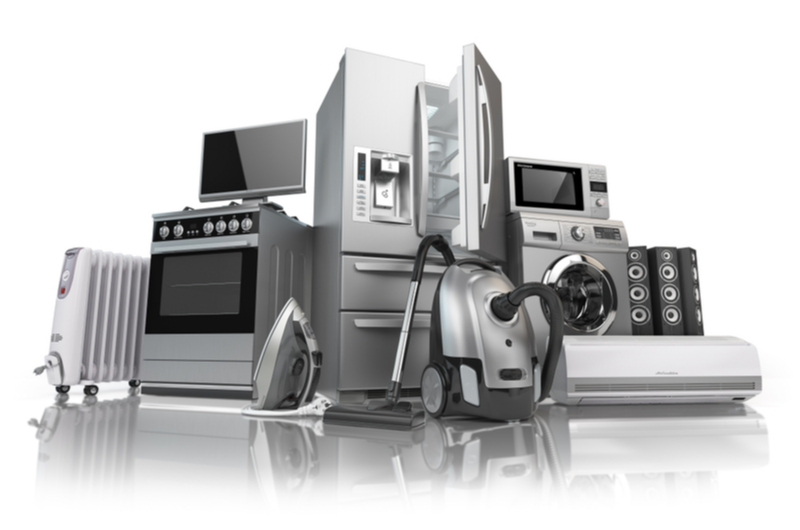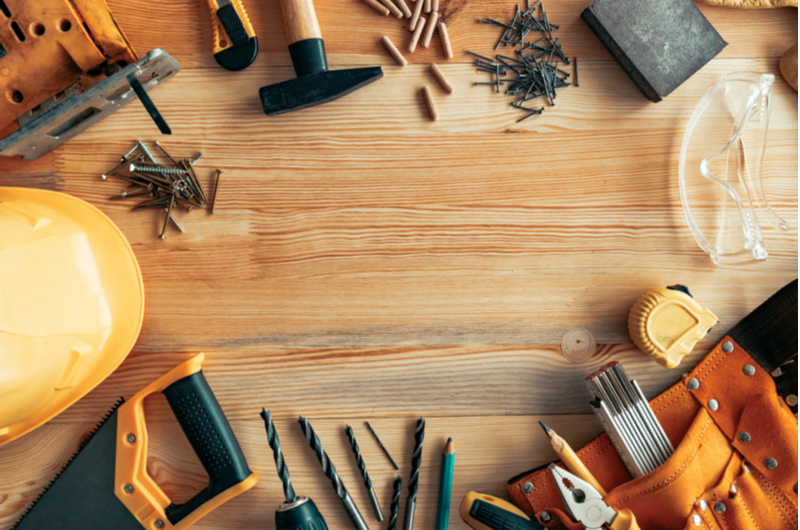Large Appliance Repairs
Large home appliances have long lives, but only if you maintain and repair the appliances. Learn about common issues and costs for appliance repair.
Large appliances, such as washers, dryers, dishwashers and refrigerators, are too expensive to continually replace. Fortunately, these appliances are built to last, with most advertising 10 to 20 years of use. While this may sound like a long time, the life of many appliances is often cut short due to unforeseen issues. If you want to get the most out of your appliances, it is important to maintain them.
Even if you are careful with your appliances, some damage is unavoidable. By quickly repairing your appliances, you greatly increase their longevity. Some repairs are small enough where you can fix the issue on your own. With larger, more complex repairs, you often need to hire a professional repair service. Depending on the extent of the damage and the type of appliance, it may be more beneficial to replace the appliance outright instead of repairing it. There are also circumstances where your homeowner’s insurance covers the cost of repairing or replacing large appliances.
Fixing vs. Replacing
For many homeowners, the biggest factor when deciding whether to make a repair or buy a replacement appliance is cost. If the repair costs more than buying a replacement, it makes the most sense to get a brand-new appliance. When breaking down the price, there are a few different costs to consider.
With repairs, the age of your appliance has an impact on the overall cost. A common misconception is older appliances are less expensive to repair because they are not as complex as modern appliances. In some cases this is true, but with many appliances, the repair parts are no longer manufactured and more expensive to buy. For larger repairs, you must also factor in labor costs.
Another consideration is how much longer you can use the appliance. Even if the repair is inexpensive, if the appliance only has one or two more years before it is expected to break down, it makes more sense to put the repair money towards buying a replacement. Many homeowners use the 50 percent rule of thumb. If the cost of repairs is more than 50 percent of buying a new product, or the broken appliance is 50 percent beyond the expected lifespan, it is better to buy a new appliance.
Common Washer and Dryer Issues
A common issue with washers is the washer stops draining completely. This is normally caused by either a faulty pump or a clogged drain hose. You can attempt to unclog the hose by flushing out the obstruction with water. If a stray object is inside the house, such as a pen or coins unknowingly left in the laundry, the fix is more complex and requires a pipe replacement.
Dryers are much harder to repair on your own, since most issues are caused by an internal malfunction. If your dryer does not get hot, or the motor runs without the dryer tumbling, something is wrong with the internal parts. Unfortunately, it could be a number of malfunctioning parts, such as the thermal fuse, heating element or motor.
Common Dishwasher Issues
Like washers, a common issue with dishwashers is failing to drain completely. Dishwashers also use a drain hose. If the hose is not clogged, the issue may be a faulty knockout plug. If your dishwasher commonly leaves spots or film on your dishes, your dishwasher may not be distributing rinse aid during cleaning. This can occur if the dispenser gets clogged. If your dishwasher runs for an unusually long time, your dishwasher is struggling to produce hot water. While this can be a larger issue with your water heater, if it only affects your dishwasher, it is likely a malfunctioning thermostat.
Common Refrigerator Issues
Because it is one of the most consistently used appliance, refrigerators are more prone to needing maintenance or repairs. If your refrigerator starts leaking, there are two possible issues. The first is the de-frost drain is blocked. Fortunately, you can normally clear blockages with warm water. A more serious issue is if the water supply clogs or becomes frozen, which typically requires replacing the supply line.
If your food is spoiling quickly or you struggle to maintain cold temperatures, your freezer fans may be broken. First, try cleaning the condenser coils on your refrigerator’s compressor. On most refrigerators, the coils are located on the base of the fridge. If this does not help, you may need to replace the compressor.
Free Repairs With Homeowner’s Insurance
Whether or not your homeowner’s insurance covers appliance repairs largely depends on your policy. In most cases, insurance policies only protect your appliances if they are damaged in an accident, such as a fire or flooding. Theft of appliances is often covered in homeowner’s insurance as well. If your appliance naturally breaks down because of age or due to human error, your insurance will not cover the costs. However, some homeowners policies will cover repairs of your large appliances whether or not there is normal wear and tear. Lots of newer policies havenow added these benefits to policy holders.
How much coverage you receive also varies based on your policy. For the best results, get an insurance plan that replaces appliances based on actual cash value. Without this clause, your insurance provider replaces the appliance based on the current value, which is often much less than what you initially paid.
Cost of Repairing Large Appliances
The cost of large appliance repairs varies depending on the severity of the issue and the specific appliance. Even if you have the same issue as another homeowner, your repair may cost much more because your appliance is older. On average, you can expect to pay the following for repairs:
- $100 to $450 for refrigerators and freezers.
- $100 to $430 for dryers.
- $100 to $350 for washing machines.
- $160 to $300 for dishwashers.
You may also be charged extra for labor charges. On average, these charges add an additional $50 to $150. There are many professional repair services to choose from, with some of the largest including:
- Home Depot.
- Lowes.
- Best Buy.
- Sears.



